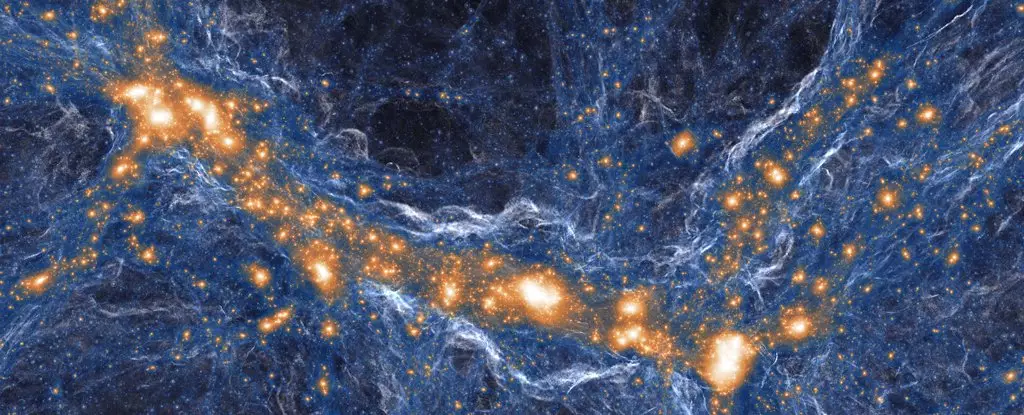Dark matter has long stood as one of the most confounding mysteries in astrophysics, garnering attention not because of what we see, but rather, what we do not. The descriptor “dark” refers not to the color or density of this elusive matter, but to its inability to interact with light. Unlike ordinary matter, which can absorb, emit, and scatter light due to its atomic structure, dark matter remains imperceptible to light, making its study a challenge. This inherent quality raises profound questions about the nature of the universe and our understanding of it.
Regular matter interacts with light through electromagnetic forces due to its charged particles—protons and electrons—allowing us to observe celestial phenomena and structures. The shadows cast by molecular clouds amidst the vibrant stars of galaxies illustrate this connection vividly. These shadows reveal the presence of matter that interacts with the light around it. However, dark matter defies this interaction. It does not possess an electric charge, which underlies its inability to emit or absorb light, resulting in a kind of cosmic invisibility. As light traverses the expanse of the universe, it passes by dark matter without engaging with it, with gravity serving as the only known connection between them.
Despite our limited understanding, it is clear that dark matter does exert a gravitational influence. Observations of galaxy clusters indicate that the gravitational interactions of dark matter play a crucial role in the formation and cohesion of cosmic structures. This has led to the concept of gravitational lensing, where light from distant galaxies is bent around massive clusters of dark matter, revealing clues about its distribution. This phenomenon suggests that despite its elusive nature, dark matter is a serious player in the cosmic arena, influencing the behavior of normal matter and the large-scale structure of the universe.
However, the question remains: how do dark and regular matter interact? Current theories suggest that gravity is the primary, if not the only, avenue of interaction between these two types of matter. While theoretical models propose that particles of dark matter would simply pass through regular matter without any significant interaction, recent studies challenge this notion. This dilemma of comprehending dark matter has implications extending far beyond simple observations; it could redefine our concepts of particle physics and cosmic evolution.
Interestingly, findings from a recent study of ultrafaint dwarf galaxies (UFDs)—satellite galaxies with fewer stars than their mass would predict—suggest that interactions between dark and regular matter may be more complex than previously thought. UFDs, composed largely of dark matter, exhibit intriguing distributions of stars that do not align with the standard gravitational-only interaction model. If dark and regular matter truly interacted solely through gravity, we would expect to see a concentration of stars at the center of these galaxies. Instead, the data indicate a more uniform presence of stars, garnering support for the idea that some form of interaction beyond gravitational forces may be occurring.
What does this mean for the broader understanding of dark matter? The notion that dark matter may interact directly with regular matter opens the door to numerous possibilities. It suggests that our traditional models of dark matter need reevaluation and refinement. It also implies a potential pathway for direct detection of dark matter particles, which has eluded scientists for decades due to their non-standard interactions.
The available data, while still limited, paints an optimistic picture for future investigations. As more observations and advanced simulations are conducted, we may inch closer to unraveling the complexities of dark matter. The path forward may include exploring more UFDs to understand how they fit into the new interaction models and refining our technological capabilities to directly observe dark matter’s properties.
In the pursuit of understanding dark matter, each discovery leads not just to answers but to new questions, sparking curiosity and fueling the quest to comprehend the enigmatic cosmos we inhabit. The age of simply understanding these gravitational giants is evolving; we stand on the cusp of possibly rewriting what we know about the very fabric of the universe itself.


Leave a Reply